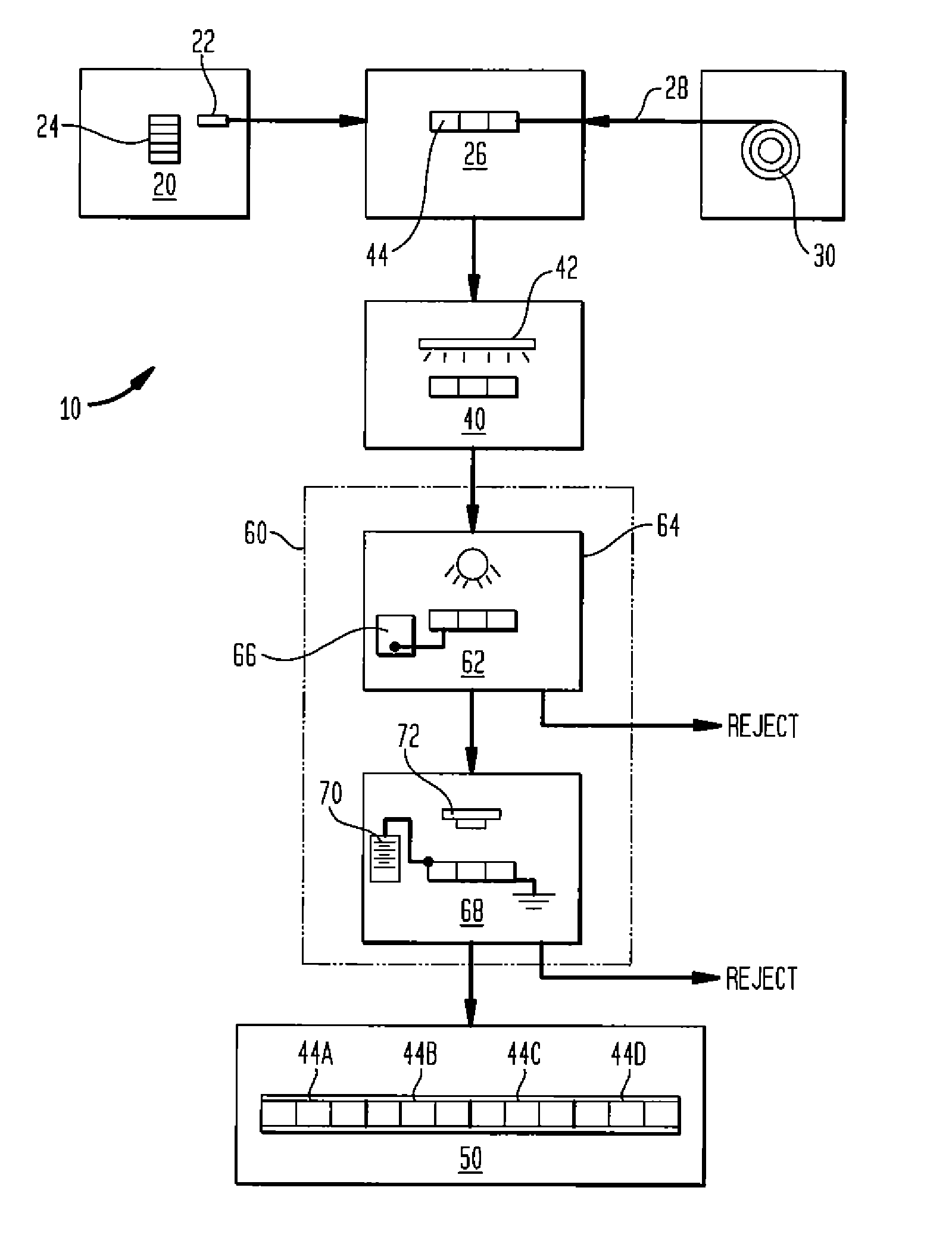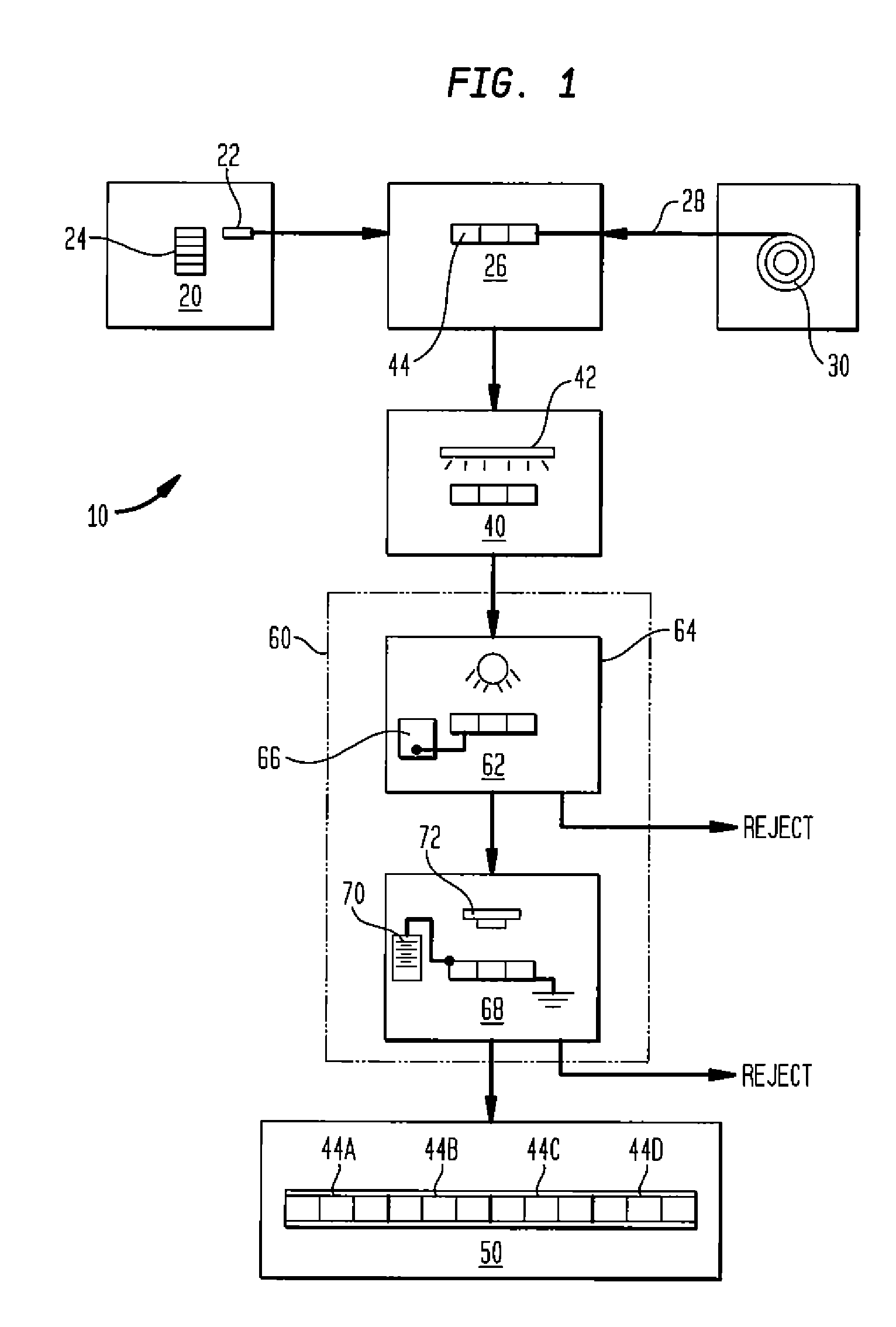Infrared detection of solar cell defects under forward bias
a solar cell and forward bias technology, applied in the field of solar cell arrays, can solve the problems of inability to repair defective cells, failure of completed modules, and inability to meet the requirements of environmental sealing construction, so as to avoid the cost of assembly of non-functional (or low efficiency) modules
- Summary
- Abstract
- Description
- Claims
- Application Information
AI Technical Summary
Benefits of technology
Problems solved by technology
Method used
Image
Examples
Embodiment Construction
[0008] In FIG. 1 an automated solar cell module production system 10 interconnects solar cells 22 by soldering flat metal leads, or tabs, to cell contacts. The system 10 can process solar cells at a high-throughput, e.g., over 500 cells per hour, resulting in substantial cost savings in high volume production. In an initial cell alignment assembly 20, solar cells 22 are unloaded from stacks 24 and edge-aligned with a mechanical aligner 26. Tab material 28 is fed from reels 30, coated with flux, cut to length, and preferably provided with a stress-relief bend. Tabs 28 and cells 22 are aligned for soldering in a solder head assembly 40. High-intensity lamps 42 in the solder head assembly 40 provide radiant thermal energy to the cell and tabs. Both front and back cell contacts can be soldered in a single heating step to form a solar cell string 44.
[0009] A variety of solar cell sizes and shapes can be processed. The number of cells per string, the number of strings per module, and the...
PUM
 Login to View More
Login to View More Abstract
Description
Claims
Application Information
 Login to View More
Login to View More - R&D
- Intellectual Property
- Life Sciences
- Materials
- Tech Scout
- Unparalleled Data Quality
- Higher Quality Content
- 60% Fewer Hallucinations
Browse by: Latest US Patents, China's latest patents, Technical Efficacy Thesaurus, Application Domain, Technology Topic, Popular Technical Reports.
© 2025 PatSnap. All rights reserved.Legal|Privacy policy|Modern Slavery Act Transparency Statement|Sitemap|About US| Contact US: help@patsnap.com


